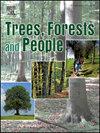Unraveling the mystery: Decoding seed characteristics and germination challenges in Terminalia chebula Retz
IF 2.7
Q1 FORESTRY
引用次数: 0
Abstract
Terminalia chebula, is a worldwide used ethnomedicinal plant. It is a rich source of hydrolyzable tannins such as chebulic acid, chebulagic acid, gallic acid, corrilagin and alkaloids which are extensively utilized in the development of non-toxic therapeutic herbal drugs. However, natural regeneration is hampered by low seed germination rates and long germination periods in habitat and ecological conditions. The morphological characteristics of seeds such as a hard seed coat, fleshy mesocarp, stony endocarp, and underdeveloped embryo coupled with the phenolics present in the fruit contribute significantly to poor germination of the seeds. Furthermore, seed germination varies depending on seed size, weight and maturity, reflecting the interaction of these factors in the germination process. In addition, edaphic factors such as altitude and temperature play a crucial part in the natural regeneration process. In the past few years, there has been a growing interest in T. chebula based medicines to cure most human heart-related issues, especially to cure Alzheimer's disease. This leads to huge demand for the fruit of T. chebula. Understanding these intricate relationships enhances insights into the mechanisms that govern seed germination and the overall dynamics of natural regeneration. Thus, the review emphasizes the morphological characteristics of fruits, the characteristics of seeds, the causes for poor seed germination, seed dormancy and methods to improve seed germination in T. chebula.
揭开神秘的面纱:解码鹤望兰(Terminalia chebula Retz)的种子特征和萌芽难题
诃子是一种世界通用的民族药用植物。它含有丰富的可水解单宁,如诃子酸、诃子酸、没食子酸、珊瑚苷和生物碱,这些单宁被广泛用于开发无毒治疗草药。然而,在生境和生态条件下,种子萌发率低、萌发期长,阻碍了自然再生。种子的形态特征,如坚硬的种皮、肉质中果皮、石质内果皮和发育不全的胚,再加上果实中的酚类物质,是种子萌发率低的重要原因。此外,种子的发芽率因种子的大小、重量和成熟度而异,反映了这些因素在发芽过程中的相互作用。此外,海拔和温度等环境因素在自然再生过程中也起着至关重要的作用。在过去几年中,人们对以 T. chebula 为基础的药物治疗大多数与人类心脏有关的问题,特别是治疗老年痴呆症的兴趣日益浓厚。这导致了对茨布拉果实的巨大需求。了解这些错综复杂的关系有助于深入了解种子萌发和自然再生的整体动态机制。因此,本综述强调了果实的形态特征、种子的特征、种子萌发不良的原因、种子休眠以及提高星云树种子萌发的方法。
本文章由计算机程序翻译,如有差异,请以英文原文为准。
求助全文
约1分钟内获得全文
求助全文
来源期刊

Trees, Forests and People
Economics, Econometrics and Finance-Economics, Econometrics and Finance (miscellaneous)
CiteScore
4.30
自引率
7.40%
发文量
172
审稿时长
56 days
 求助内容:
求助内容: 应助结果提醒方式:
应助结果提醒方式:


